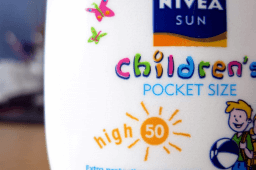Old-Time Player Piano Day
Old-Time Player Piano Day is observed next on Wednesday, May 27th, 2026 (167 days from today).

While I could learn more than I wanted to know about acoustic pianos, I couldn't figure out why today was such an important day for them. They were developed gradually by different people inventing improvements based on the ideas of their predecessors. It seems that a Frenchman named Fourneaux created the original playing piano in 1863 but it was improved upon by many people until the 1920s when it reached its peak. The sales slump that followed, and the subsequent Great Recession, actually caused an industry-wide boom. The only people who still care after World War II are some collectors who just love them and spend time and money restoring whatever they find.
History of Old-Time Player Piano Day
Music is in the air today. Who is playing it? No one! It came from an old playing piano, a kind of piano that played itself because it was Old Player Piano Day! Player's pianos, also known as pianolas, were once a trademark of the Aeolian Company. The player's piano reads notes from small holes in the scrolls, and the reels can be changed to play different songs. The pianos are powered by suction, with a two-foot pedal pumped by a pianist. Pianists can also use levers to influence the sound; they can control stress and tempo, and use soft and sustain pedals. Why piano players are called "old-fashioned"? Did you know that they had been popular during the first three decades of the twentieth century?
Edwin Votey presented a prototype of a player's piano in 1895, and most player pianos since then used it as a model. The Aeolian Company acquired the rights to Votey's piano in 1897 and marketed it as Pianola. These early pianos, known as "push players" or external players, had a separate unit that was rolled into a piano to turn it into a playing piano.
In the early 20th century, an all-inclusive single player with built-in gameplay mechanics debuted. Called Apollo, it was followed by similar acoustic pianos from other companies, and the external player soon disappeared. These pianos use an electronic suction pump instead of a foot operated bellows. In 1904, reconstructive pianos were introduced to the market, which reproduced sound exactly as it was recorded and were meant to be heard, making it feel as if the recording artist was present. This means that the person powering the piano no longer has to manually intervene to add dynamics or alter the sound in other ways. Edwin Welte of Germany was the first company to market renewable players. Other notable companies that have created them are Duo-Art and the American Piano Company (Ampico). It was not until 1908 that the standard 88-note coil was adopted by all manufacturers. Before that, many musical rolls were incompatible with each other and had fewer than 88 notes, the number of keys on a piano.
Player pianos have enjoyed wide public interest for three decades. They lost popularity after the Wall Street crash of 1929, with only a handful of companies still producing them in the 1930s. Increased interest in them during the 1960s led to the proliferation of companies produces them for a while. Today, roll-playing pianos are no longer manufactured, although electronic music players such as the Yamaha Disklavier are on the market.
The long-standing player's piano festival has been marked since at least 2011. It's unclear why it took place when, but it happened to be the World Championship Antique Piano Festival and Competition during Memorial Day weekend. Today's holiday can be traced back to carnival, although the festival is about playing the piano, not the pianist, so there's no direct connection.
Some interesting truths about piano
For those unfamiliar with this instrument, it is best described simply as a self-playing piano. The notes to be played are represented by small holes on the interchangeable scrolls, while the player mechanism is powered entirely by suction, generated by the action of two foot pedals. .
The operator, aka the 'pianist', achieves dynamic coverage of the music by varying the amount of pressure applied to the foot pedal. In addition, a set of manually operated levers mounted just below the front of the keyboard helps with marking, tempo control, sustain and soft pedal activation and selection of play and rewind modes. In the hands of a perfect operator, you can achieve a lifelike musical performance.
Playback pianos were extremely popular between 1900 and 1930, after which time wireless devices, considerably cheaper and more versatile, became the primary source of home entertainment. As the vast majority of player pianos today are at least 70 years old and many have sadly deteriorated, enthusiasts around the world are putting a lot of time and effort into making them restore these remarkable instruments.
Paper rolls are still available in abundance, both old and new and virtually all musical tastes are catered for. During the first three decades of the twentieth century, a significant number of famous pianists committed their performances to music roll, using specially recorded pianos. The scrolls recorded by George Gershwin, for example, are still popular today, and although original examples are scarce at present, experts respond to demand from collectors by creating new replicas.
A pianist can of course play with his hands in the normal way, since the piano's keyboard and keyboard are completely conventional. In fact, one can often play the keyboard while the scrolling mechanism is active, if you want more notes or harmonies! The term 'Pianola' was originally a trademark, first used by the Aeolian Company just over a hundred years ago, but in recent times has become a common reference for self-playing pianos.
How to celebrated Old-Time Player Piano Day
If you know anyone who has an old piano or if you have one, today is a great day to use it. There are many other ways you can mark the day such as order some player piano recordings or player piano books.
- Check out some ads for older piano players.
- Watch a video of the player's piano.
- Get more knowledge about pianos by taking a visit to the Pianola Institute.
- You can even join a piano club.
Observed
Old-Time Player Piano Day has been observed annually on May 27th.Dates
Monday, May 27th, 2024
Tuesday, May 27th, 2025
Wednesday, May 27th, 2026
Thursday, May 27th, 2027
Saturday, May 27th, 2028


